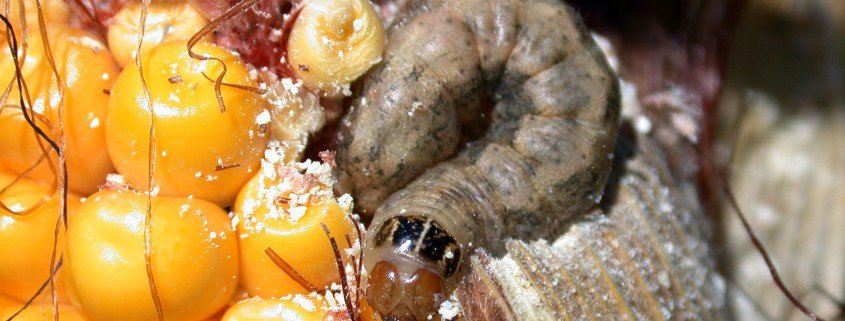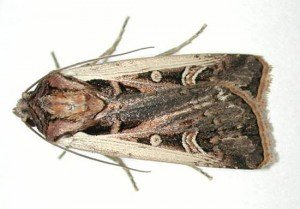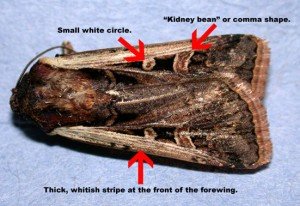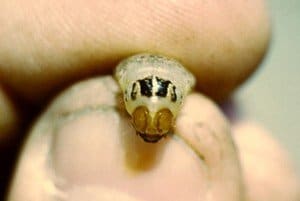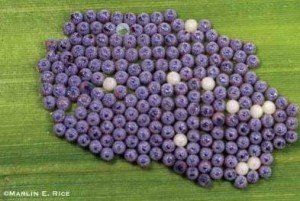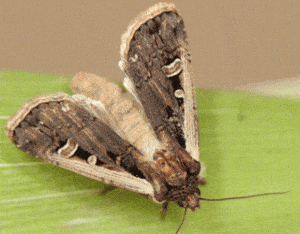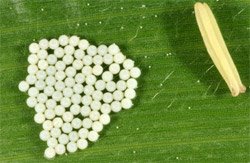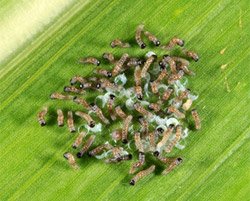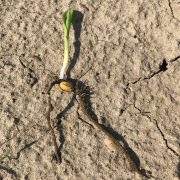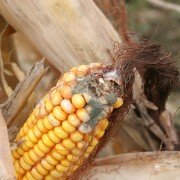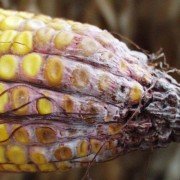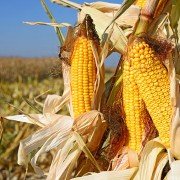Western Bean Cutworm
Why are they a concern?
The western bean cutworm is a damaging pest in corn and dry edible beans. They can cause large yield losses and reduced grain quality.
In corn
They begin to feed on the tassels and silks until they are large enough to tunnel into the ear and feed extensively on the kernels. This can cause a reduction in pollination, yield and quality of the crop. The ear feeding can also lead to the development of ear rots later in the season. Multiple larvae are able to feed on the same ear.
In edible beans
The larvae begin feeding on the leaves and later move to the pods and seeds once they are bigger. The pod feeding can result in lower quality and yield.
Adult
- Thick, white stripe at the front of the forewing.
- Small spots shaped like a full moon and a boomerang.
Larvae
- No dark spines or stripes on the side.
- Dark stripes behind the head.
Eggs
- Laid on the upper leaf surface of the upper 3-4 corn leaves.
- Small eggs, laid in clusters of 5-200 eggs.
- Eggs begin as a creamy white colour and turn purple as they get ready to hatch over the course of a few days.
Scouting
- Scout 20 plants in five areas of the field from early June to the end of August.
- Look for egg masses and young larvae on the upper 3-4 leaves of the corn.
- Age of the eggs found is important to know when they will hatch. Insecticide application is most effective when young larvae are active. They are white when newly laid eventually turning purple/black.
- Pheromone traps can be used to monitor peak moth flight, which will indicate when to begin scouting.
- Scouting for WBC egg masses in dry beans is very difficult. Instead, scout for pod feeding 10-20 days after peak moth flight.
Photo above, left to right: Day 1 (white); Day 2 (light tan); Day 3 (dark tan); Day 4 (purple); Day 5-7 (hatched).
Western Bean Cutworm adult
Newly laid eggs
Eggs turning light tan
Eggs turning purple
Newly hatched larvae
Thresholds
Corn
Spray is warranted if 5% of the plants have eggs or small larvae. If the eggs have hatched, spray at 95% tassel emergence or if tassels are already emerged, when most of the eggs are expected to hatch.
Dry beans
If the accumulated catch is between 700 and 1,000 moths, damage risk to beans is moderate and beans must be scouted closely. Check fields for larval feeding 10-20 days after the peak flight, and spray if pod feeding is found. If the catch exceeds 1,000 moths by the peak, risk is high for damage in dry bean and an insecticide application is needed 10-20 days after peak flight. Spray any edible bean field that is neighboring a corn field that has reached threshold as well.
Management strategies
- Insecticide application timing is critical, once the larvae have entered the ear control will not be achieved without the use of a systemic product such as Coragen.
- Matador and Coragen is registered for western bean cutworm control in corn and dry beans.
- Decis and Voliam Xpress are two additional insecticides registered for control in corn only.
- Deep tillage can disturb and kill overwintering larvae in the soil.
Sources:
Large photo: Purdue Department of Entomology

